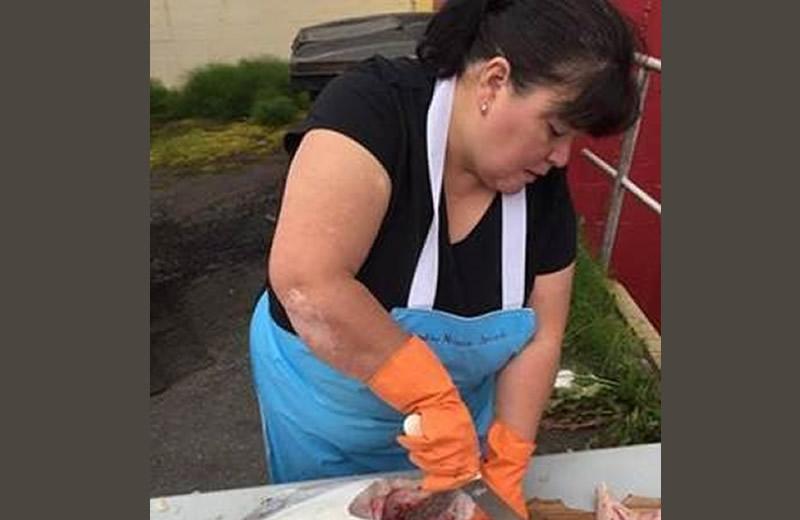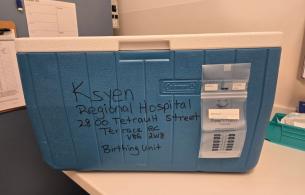Fish and coastal First Nations peoples
Salmon and halibut are important staples in the diet of many people in BC and continues to be a food of significance to coastal First Nations peoples. Sabrina Clifton, the Programs Manager at the Gitmaxmak'ay Prince Rupert and Port Edward Nisga'a Society is actively involved in programming that supports local Nisga’a members in preserving salmon. Sabrina has been smoking salmon and making k’ayukws (smoked and dried salmon strips) for about 25+ years.
“There are different ways that Indigenous people prepare foods for preserving. The best teachers are our Elders. For three years classes have been held where our Elders mentor our youth and members. We have two smoke houses at the ‘Rupert Lawn and Garden’ available to our Gitmaxmak’ay Members. I think it is very important to continue to teach how to preserve traditional foods as the seafood is ‘our back yard’. Our Elders have so much to offer us; the knowledge they have is amazing. There are always tricks and different ways of preparing. We always learn something new. There is always a lot of laughter and when preparation is all finished you get a sense of accomplishment which is good for the soul.” -Sabrina Clifton
In addition to providing opportunities for Elders to share their knowledge and skills with youth and community members, Sabrina also works with Elders to organize traditional feasts twice a year for residents of Acropolis Manor-the local long term care facility. The feasts include locally prepared, seasonal foods such as fish chowder, moose soup, and roe on kelp. Local First Nations cultural entertainment is a highlight of the feasts.
Important sources of nutrition
Salmon and halibut are important sources of nutrition. They are high in protein and B vitamins. They are high in omega-3 fatty acids that help protect against strokes and heart disease. Salmon is an excellent source of vitamin D, which is important in keeping our bones strong as well as protecting us from arthritis and cancer. Fish heads have been an important source of calcium for keeping one’s bones and teeth strong. Fish head soup is one way of getting these nutrients. Canned salmon is another but be sure to mash up the bones and not take them out, as they are high in calcium!
In addition to nutritional benefits, fishing and processing fish is good for the mind, body, and spirit. These activities have been and continue to be an important part of culture, connecting families, physical activity and mental wellness!
Here’s a recipe submitted by Sabrina for Fish Hash, a traditional way of preserving salmon:
Fish Hash
Instructions
- Layer fresh or thawed frozen salmon with coarse salt in tightly covered air tight container and store for one month in a cool (below 20 degrees) dry place to cure. Both sides of the fish should be salted. Remove skin or place skin face down.
- To use it, soak salmon in water over night to remove most of the salt & salty taste; by this time it is firm in texture.
- Crumble and mix with mashed potatoes, diced onions and oolichan grease (optional)
- Bake in the oven until the top is toasted.
- Serve fish hash with toasted seaweed (hlak’askw) on top
Note: you can also use jarred salmon, smoked black cod, or jarred smoked salmon. Salt in appropriate concentrations inhibits the growth of bacteria. Use about a quarter the weight of seafood by weight.














Comments